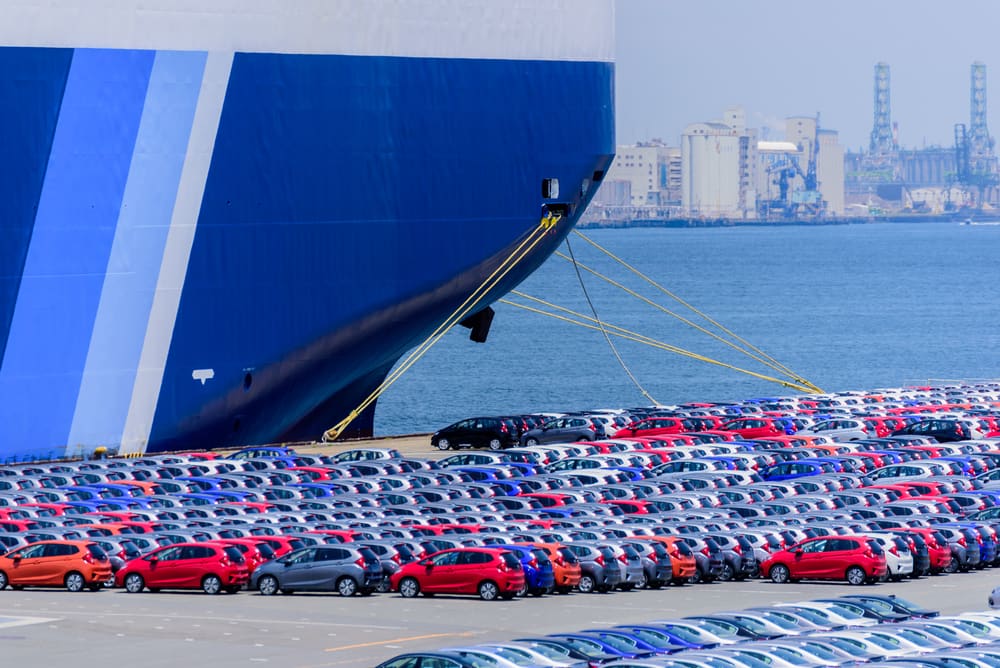In today’s global market, exporting vehicles is becoming increasingly difficult. One of the most clear reasons is that the United States is actively involved in fighting the illegal market of stolen cars.
The Freight Forwarding Market has responded to the red tape involved in shipping vehicles, by designating specific departments to handle this commodity. In fact, there are numerous Freight Forwarders who specialize only in the shipping of vehicles.
This growing shift in the industry is due to strict customs requirements. If these requirements are not fulfilled, there can be a compromise of the shipment. In the worst cases, there are heavy fines that steamship lines will have to pay, along with the recalling of containers.
The United States is one of the top exporters of used vehicles. This is possibly due to the very good condition these cars are in when exported (mostly a maximum of a 3-year contract lease by the time of export.) Currently, there is high demand in East Europe, and specific areas in Middle East, for used vehicles.
There are a few important things to keep in mind when shipping vehicles:
- Major Vehicle Categories: Cars, Snowmobiles, ATVs, Motorcycles
- The fuel tank must have less than a 1/4 tank of fuel, otherwise it will be considered a hazardous shipment (with an inflammable liquid.)
- No hazardous cargo may be shipped inside the vehicle. It is possible to pack personal goods inside the car.
- Inside a 40HC container, up to 5 cars can be loaded at maximum (this depends on the dimensions.) However, most of the time, four cars is the general standard. An illustration of this is shown below:

Let’s focus now on the restrictions that the Custom Border Protection service has set up for this type of shipments (19CFR192.)
We will also explore how the different parties (Exporters, Freight Forwarders, Carriers, Terminal Operators and other Concerned Parties) have adapted to meet these stringent regulations.
- For those vehicles exported by vessel or aircraft, the required documentation (Certificate of Title) and the vehicle must be presented to Customs at least 72 hours prior to export/vessel arrival at port of loading.
The purpose of requiring the documentation and the vehicle is so that CBP officers have the necessary time to physically examine the vehicle. The minimum statutory 72-hour requirement does not include weekends and Federal Holidays.
It is suggested that the documentation be presented at least 72 hours prior to the start of any holiday weekend, to ensure the documents are processed timely, and the vehicle export is not delayed.
- Customs examines the submitted documentation, and if accepted, release a stamp on the titles, which allows the vehicle to be exported.
- To avoid slowing the flow of commerce, carriers have special negotiations of demurrage free time with the terminal. This allows a wider window of time in regard to the receiving of vehicles.
- Freight Forwarders issue the titles with the customs stamp released, before the vessel arrives to the carrier, which allows the terminal to load the containers on board of the vessel immediately.
- The requirements of 19CFR192 cannot be satisfied through the Automated Export System (AES) filing of the commodity data contained in the Electronic Export Information, because Customs and Border Protection and Department of Commerce regulations are different.
The 72-hour clock does not begin when export vehicle data is filed via AES; rather, it begins when the required documentation is presented to CBP.
Carrier Liability
The Vessel Master is charged with the responsibility of presenting true manifest. If used vehicles are not included on the manifest, or are inaccurately described thereon, a liability for penalties may be incurred.
Additional information is available at www.CBP.gov. Vehicle exports are detailed on the website, in the Trade section’s “Basic Import and Export” category: http://www.cbp.gov/trade/basic-import-export/export-docs/motor-vehicle.




